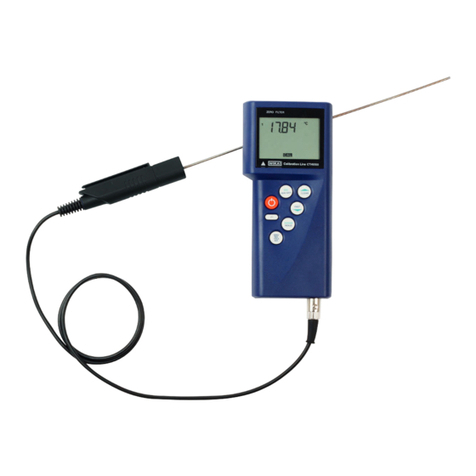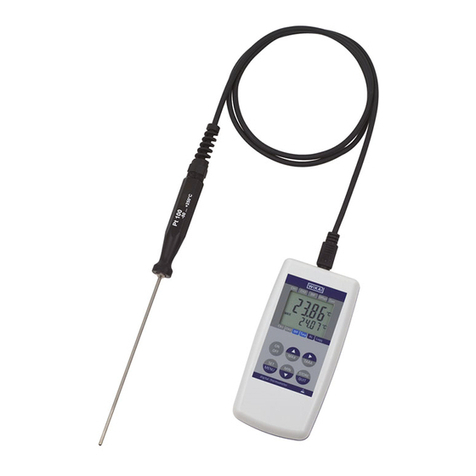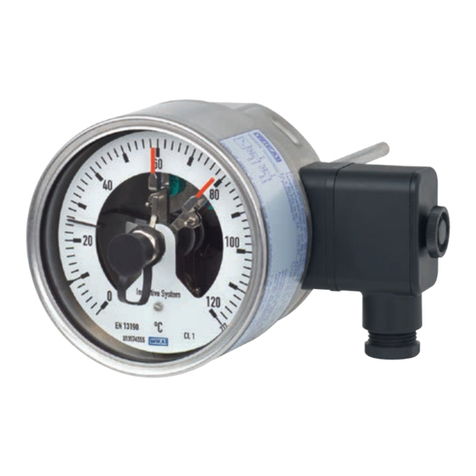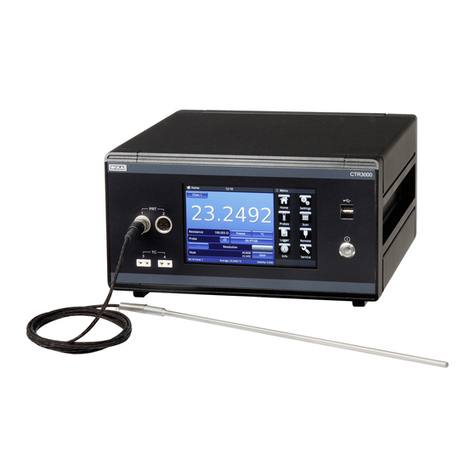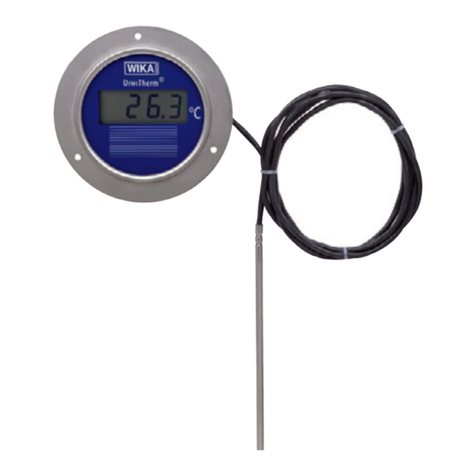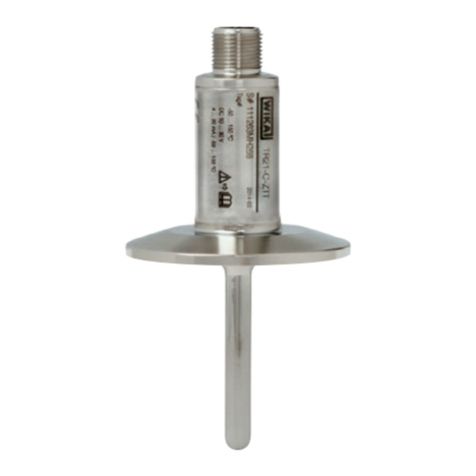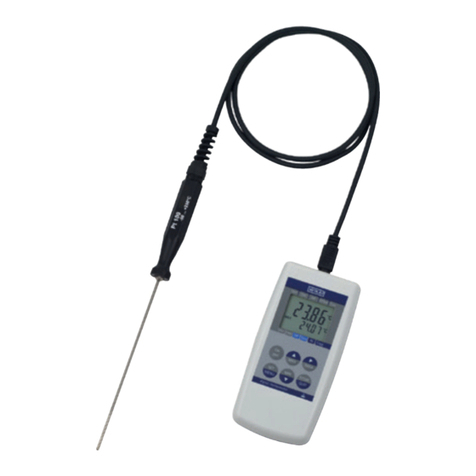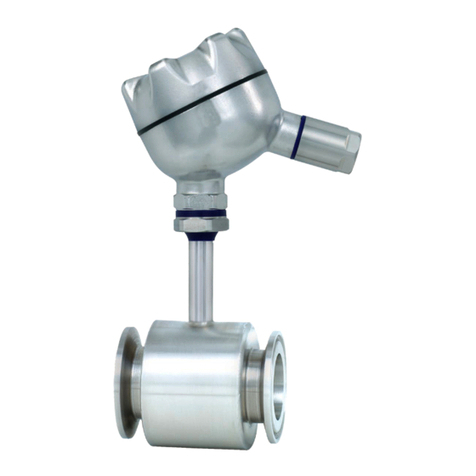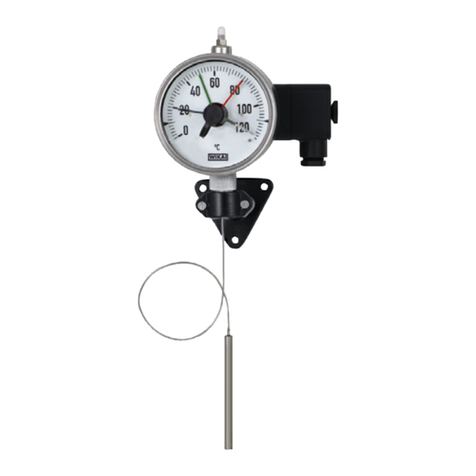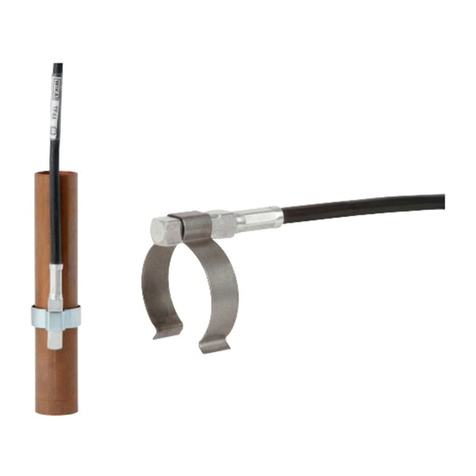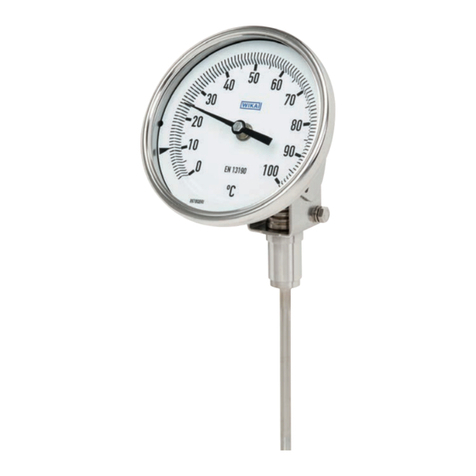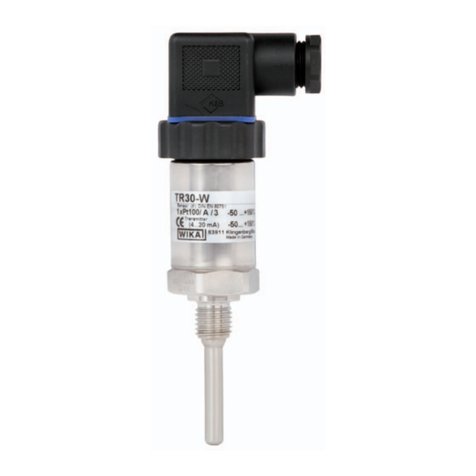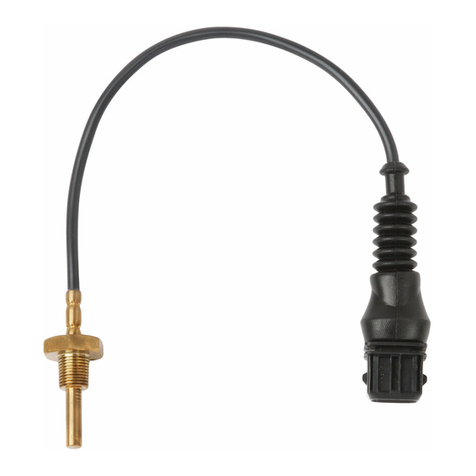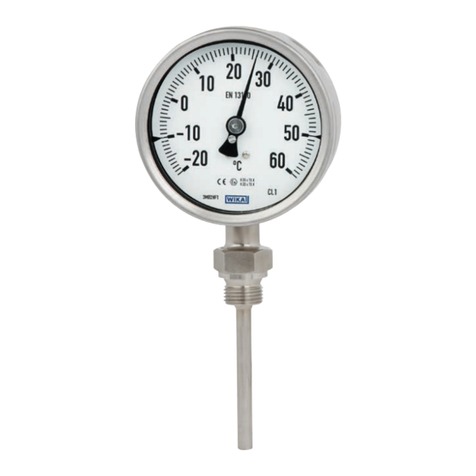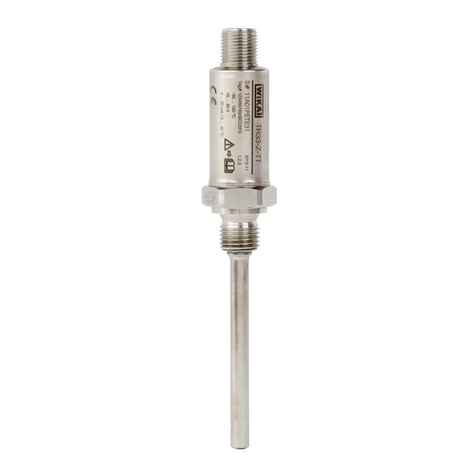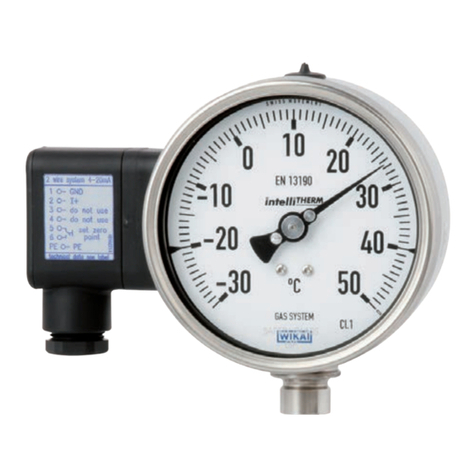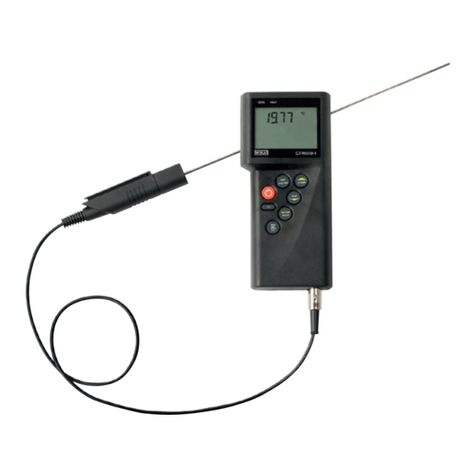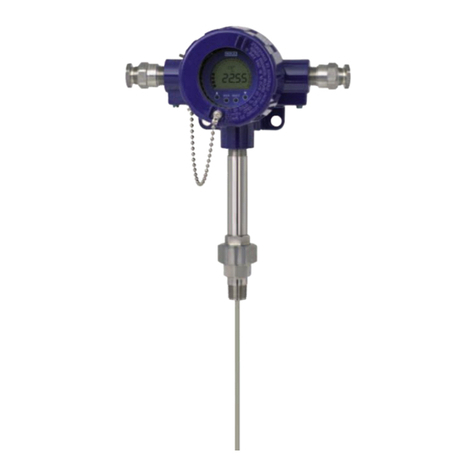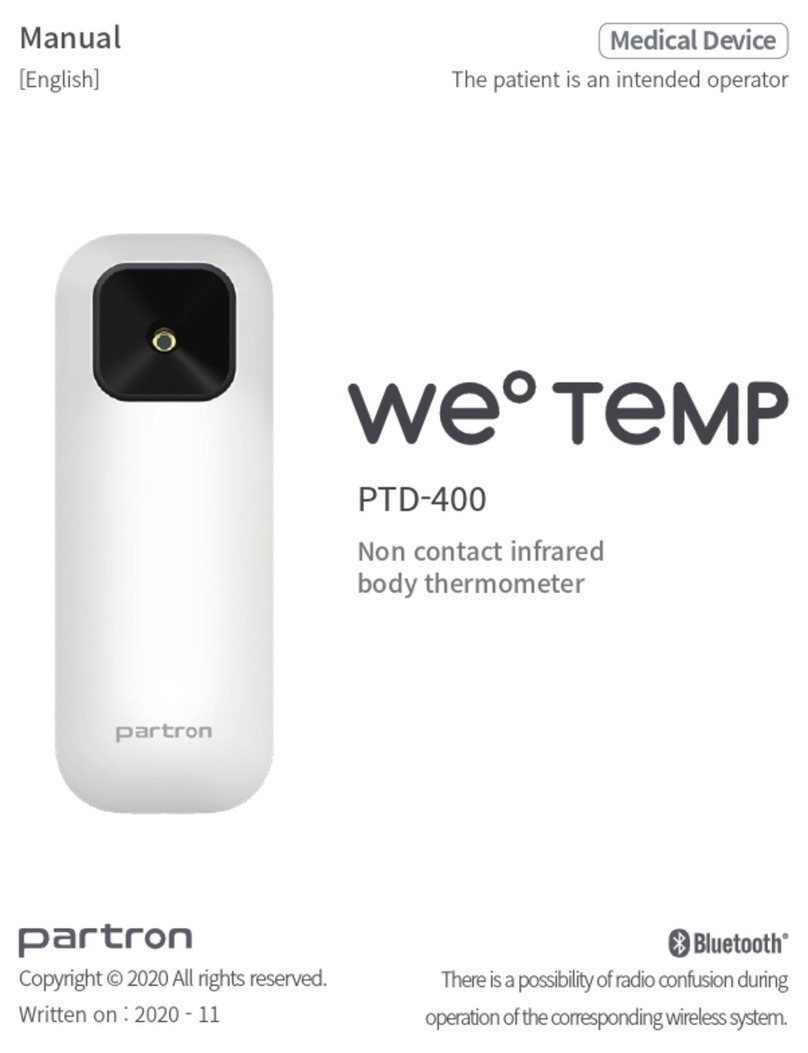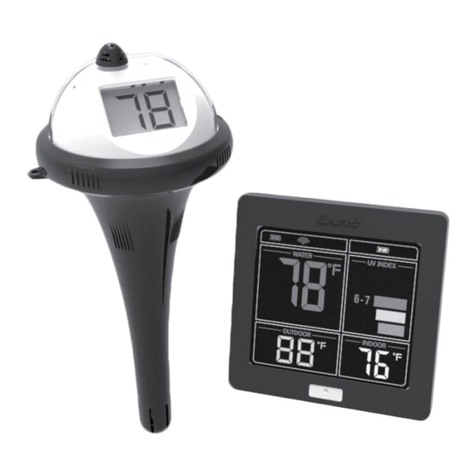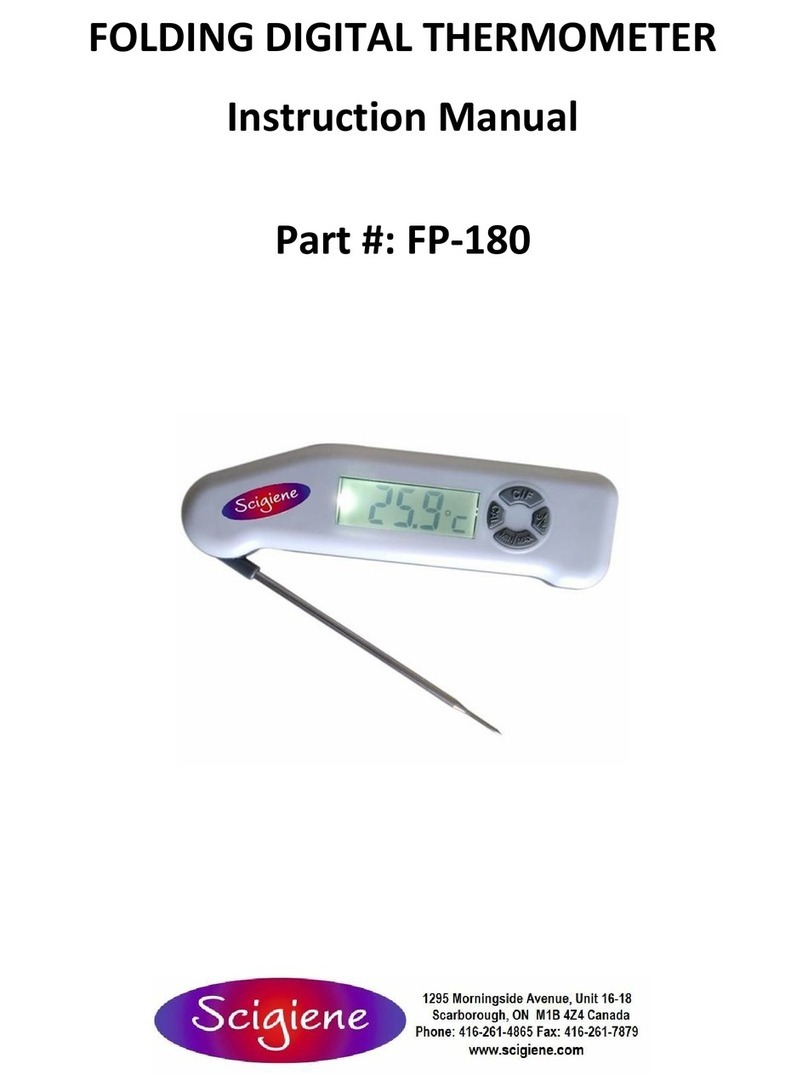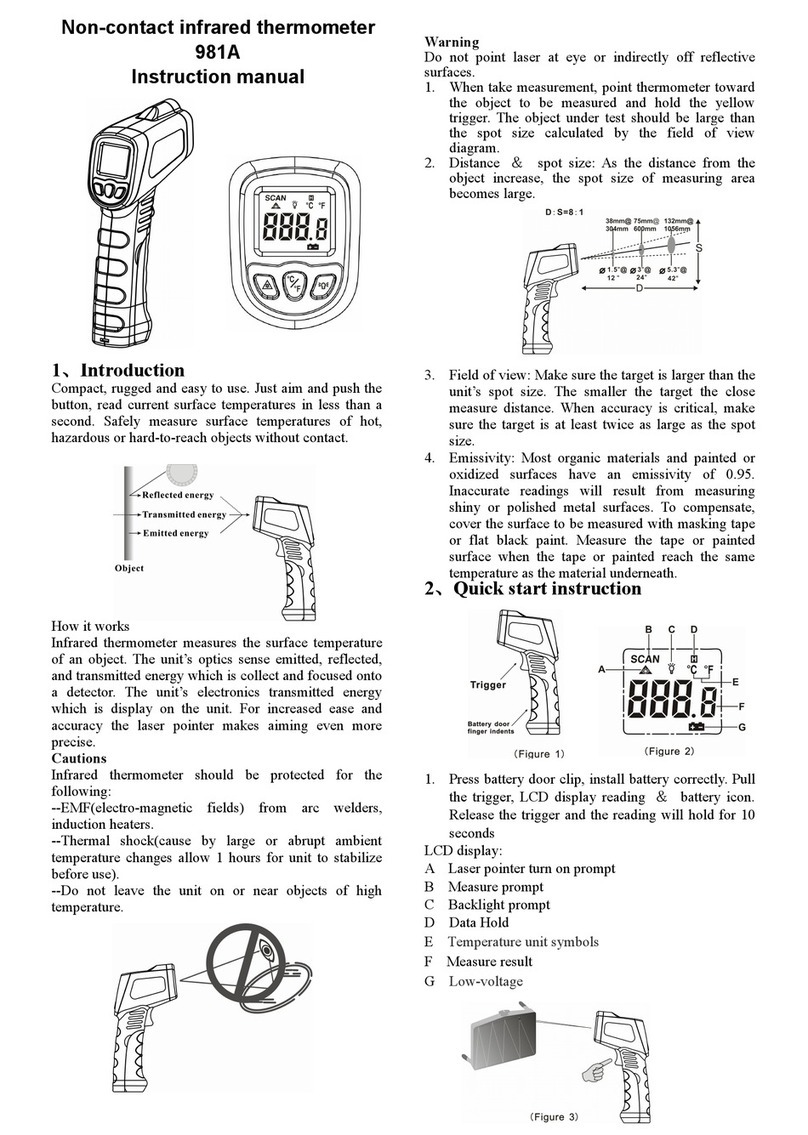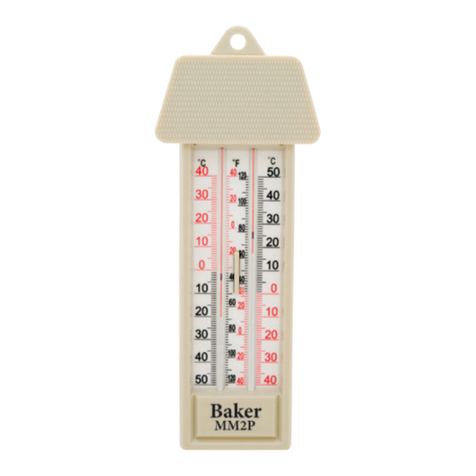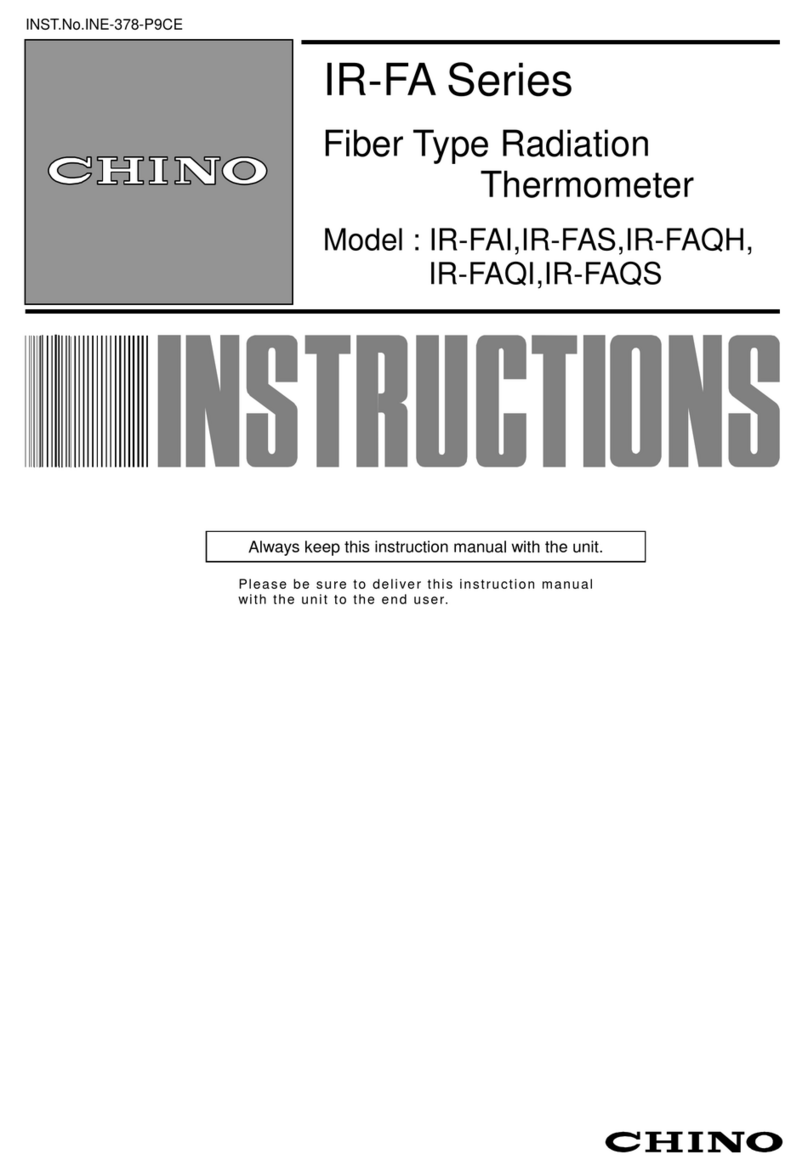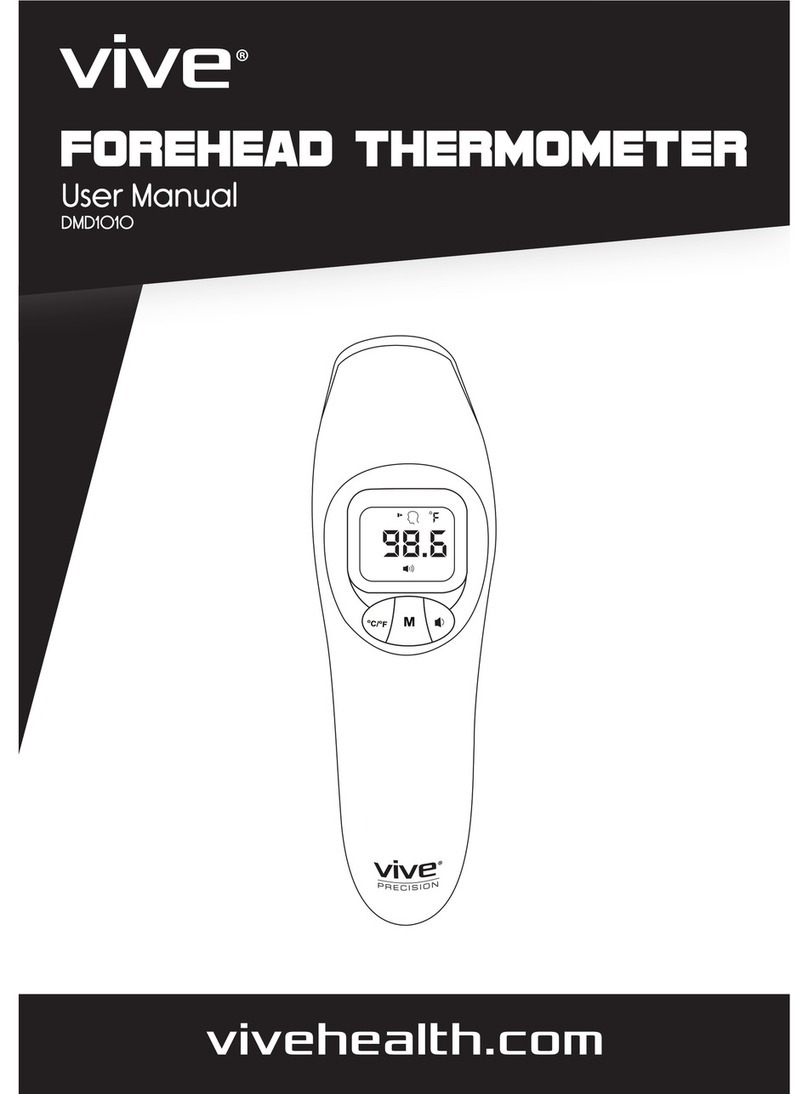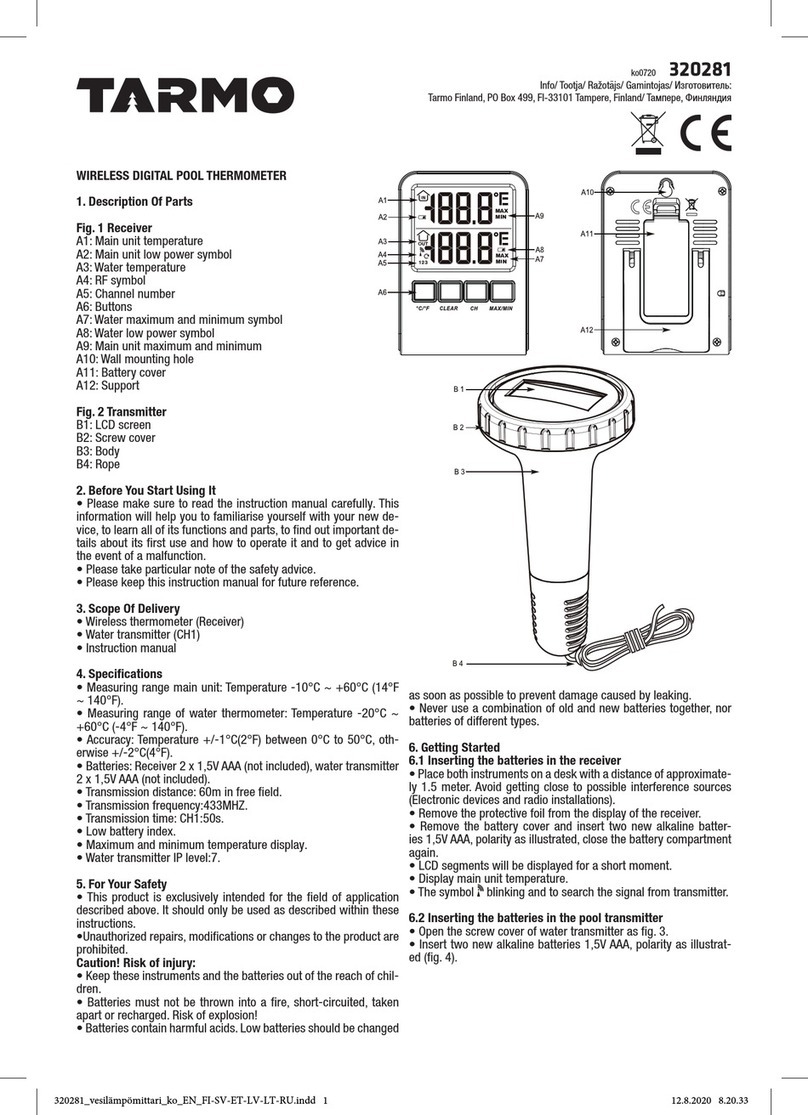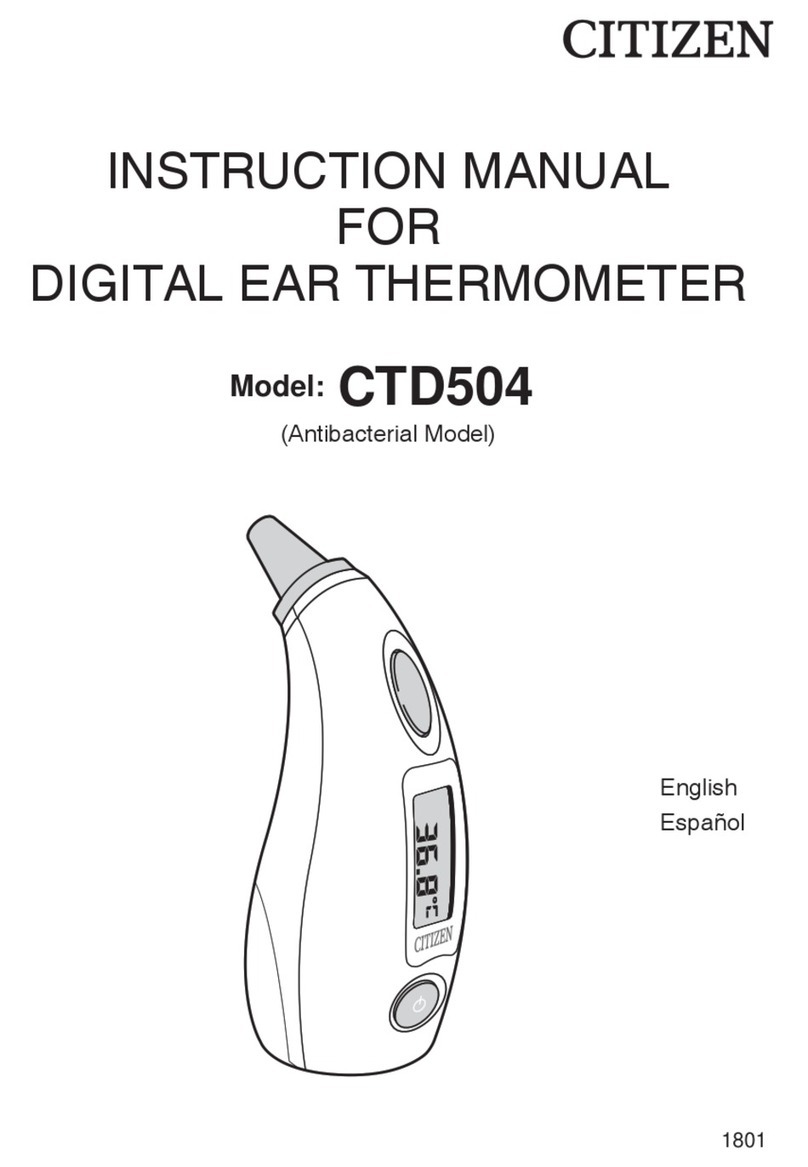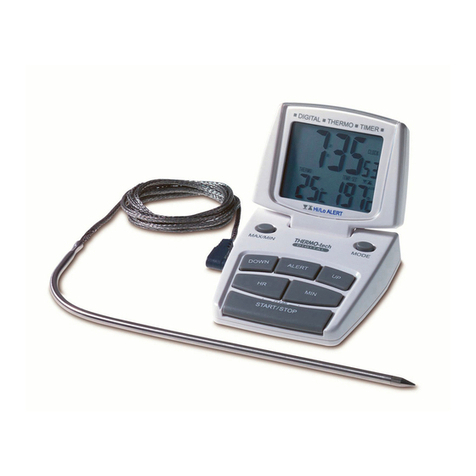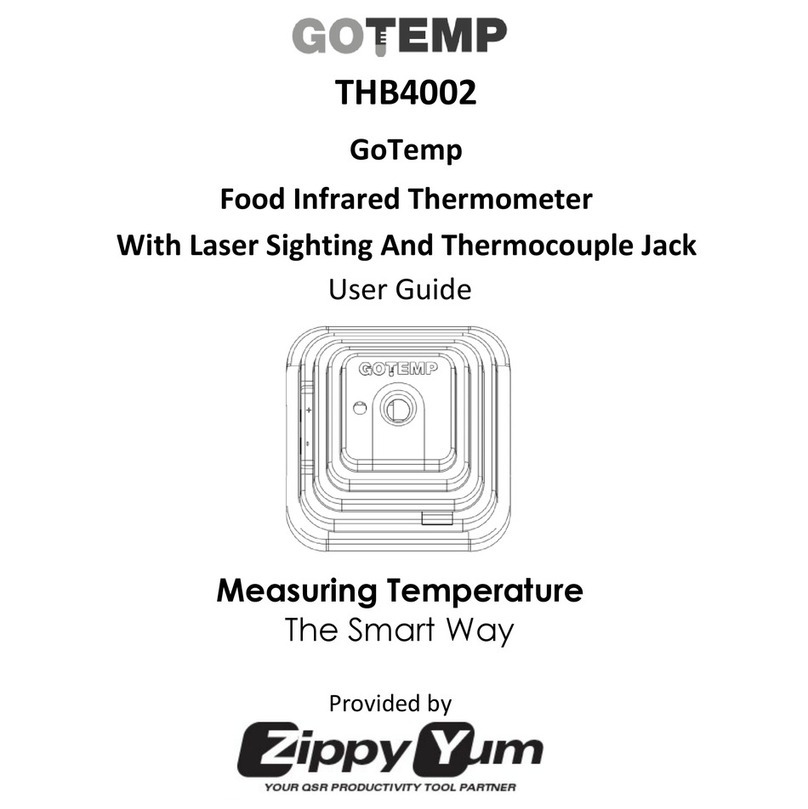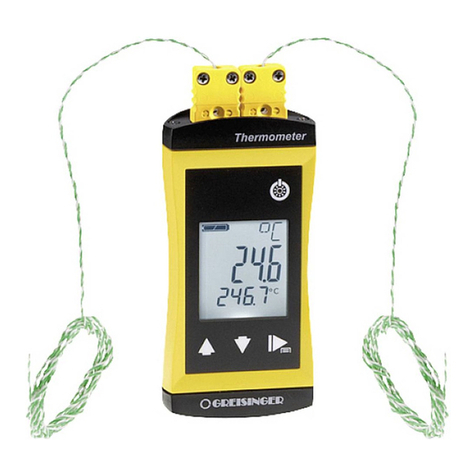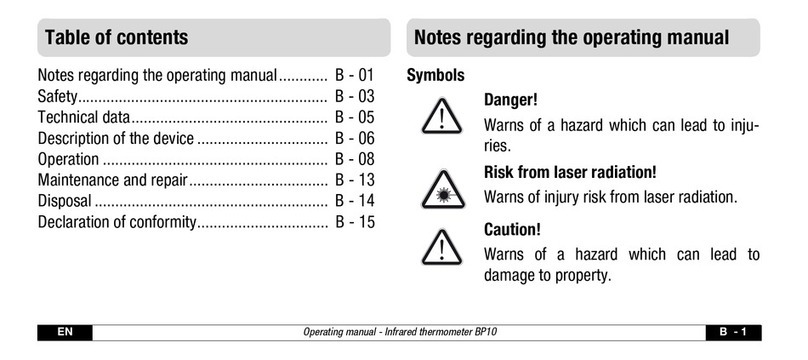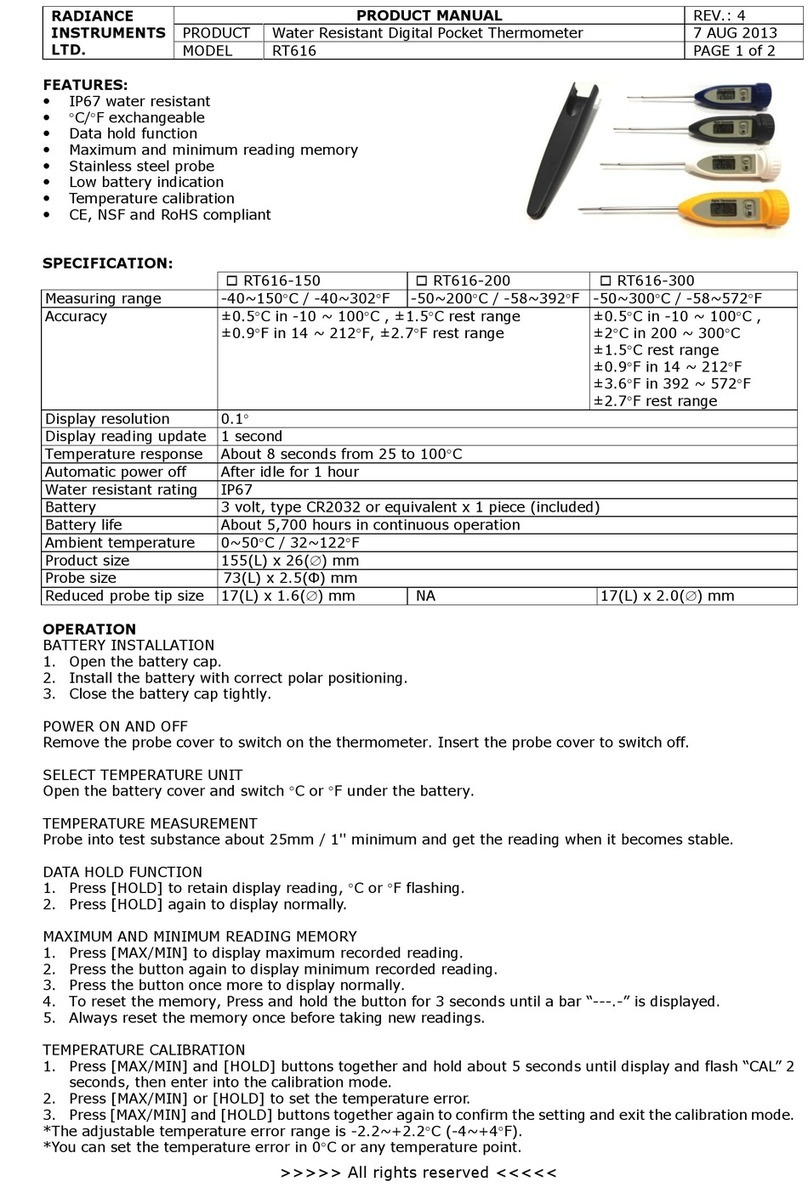
14006814.04 11/2015 EN/DE/FR/ES
WIKA operating instructions model TR21 9
EN
Thermometer with transmitter and output signal 4 … 20 mA (models TR21-x-ZTT
and TR21-x-ZTB)
Total measuring deviation in
accordance with IEC 60770
Measuring deviation of the measuring element + the transmitter
Basic conguration Measuring range 0 ... 150 °C (32 ... 302 °F), other measuring
ranges are adjustable
Analogue output 4 ... 20 mA, 2-wire
Linearisation Linear to temperature per IEC 60751
Linearisation error ±0.1 % 4)
Switch-on delay, electrical max. 4 s (time before the rst measured value)
Warming-up period After approx. 4 minutes, the instrument will function to the
specications (accuracy) given in the data sheet.
Current signal for error signalling Congurable in accordance with NAMUR NE43
downscale ≤ 3.6 mA upscale ≥ 21.0 mA
Sensor short-circuit not congurable, in accordance with NAMUR NE43 downscale
≤ 3.6 mA
Sensor current < 0.3 mA (self-heating can be ignored.)
Load RARA ≤ (UB- 10 V) / 23 mA with RA in Ω and UBin V
Eect of load ±0.05 % / 100 Ω
Power supply UBDC 10 ... 30 V
Max. permissible residual ripple 10 % generated by UB< 3 % ripple of the output current
Power supply input protected against reverse polarity
Power supply eect ±0.025 % / V (depending on the power supply)
Inuence of the ambient
temperature
0.1 % of span / 10 K Ta
Electromagnetic compatibility
(EMC) 6)
2004/108/EC, EN 61326 emission (group 1, class B) and
interference immunity (industrial application) 5), conguration at
20 % of the full measuring range
Temperature units Congurable °C, °F, K
Info data TAG No., description and user message can be stored in
transmitter
Conguration and calibration data Permanently stored
Response time (measurement in
accordance with IEC 60751)
t50 < 4.7 s t90 < 12.15 s
Electrical connection M12 x 1 circular connector (4-pin)
Autoclavability (option) Autoclavable with mounted protection cap at connecting plug
(for further details, see „Ambient conditions“)
Readings in % refer to the measuring span
1) The temperature transmitter should therefore be protected from temperatures over 85 °C (185 °F).
2) Through their small design, face-sensitive measuring resistors serve to reduce the heat dissipation with short insertion
lengths. Available for the temperature range up to 150 °C (302 °F).
For thermowell insertion lengths of less than 50 mm, face-sensitive measuring resistors are recommended.
For thermowell insertion lengths of less than 11 mm, face-sensitive measuring resistors are generally used.
3) Class accuracy A only valid in the temperature range -30 ... +150 °C (-22 ... +302 °F) or -30 ...+250 °C (-22 ... +482 °F),
otherwise class B
4) ±0.2 % for measuring ranges with a lower limit less than 0 °C (32 °F)
5) Use resistance thermometers with shielded cable, and ground the shield on at least one end of the lead, if the lines are
longer than 30 m or leave the building. The instrument must be operated grounded.
6) During transient interferences (e.g. burst, surge, ESD) take into account an increased measuring deviation of up to 2 %.
3. Specications
